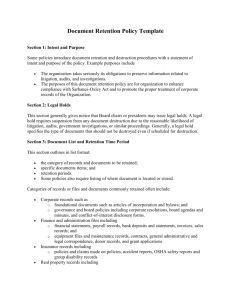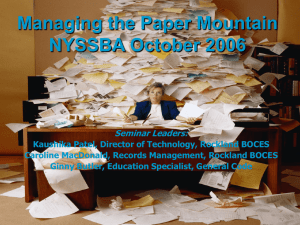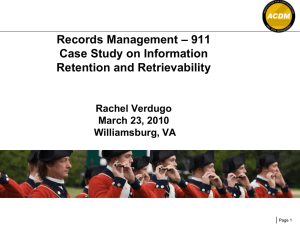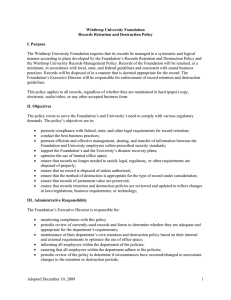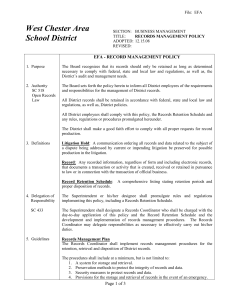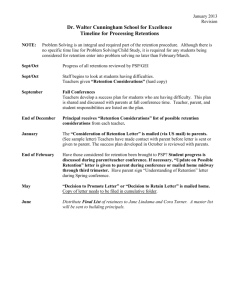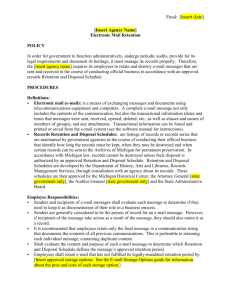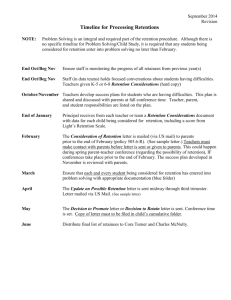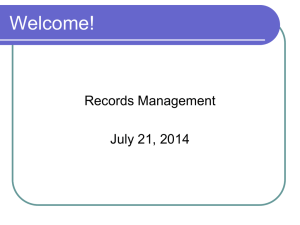Records Management Web Site - Northern Michigan University
advertisement
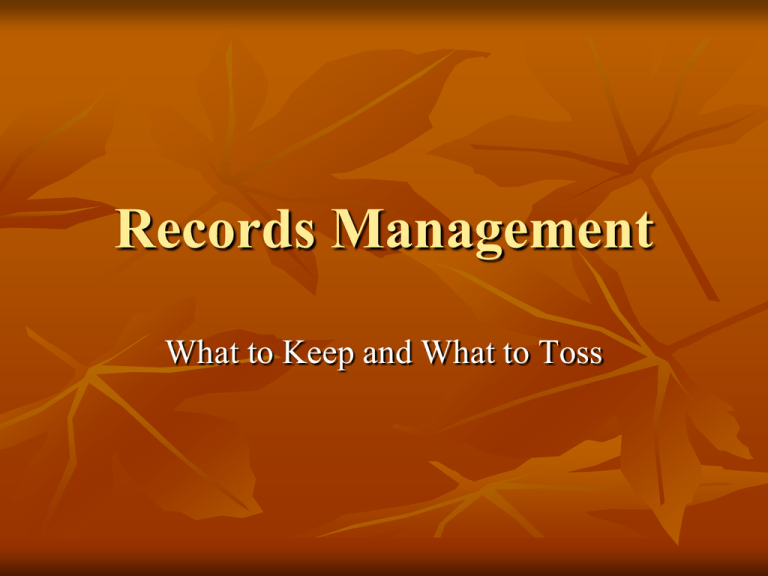
Records Management What to Keep and What to Toss What is Records Management? Management of the life cycle of a record Creation Storage Retrieval Retention Protection Disposition Ensures that authentic and accurate information can be retrieved quickly, easily and costeffectively Life Cycle of a Record Record Creation Records Active Use Records Center Record Inactive Destruction Archives Records Exist in Many Formats The medium used to document an official activity or function is irrelevant The content of the record determines if it is evidence of an official government transaction, action, or activity Records can be stored as paper, photographs, maps, drawings, microfilm, databases, digital images, spreadsheets, e-mail, tweets, etc. Records Management is Risk Management Understand the risk of loss--loss is not just inadvertent destruction… Intentional and illegal destruction or alteration Security breech (theft, misuse or fraud) System backup process failed Human error Technology obsolescence Deterioration Pests (rodents, insects, etc.) What is the Negative Impact? Financial loss Lost opportunity Litigation/audit/ investigation System repair/recovery costs Customer inconvenience Lost time/productivity Public embarrassment or scrutiny How to Mitigate Risk? Select appropriate recordkeeping systems (efficient and effective retrieval) Policies, procedures, documentation Security (inappropriate use or alteration, protect private information) System backup Redundancy Disaster plan Implement retention routinely in accordance with an approved schedule Maintain proper storage conditions NMU Records Management Policy and Statutory Requirements University Records Center University Archives Records Retention and Disposition Scheduling New Records Management Web Site Policy and Statutory Requirements Michigan Public Act 431 (1984) Michigan Public Act 116 (1992) Michigan Optical Imaging Rules NMU Board of Control Policy Statement (1991) Records Retention Scheduling Assists offices in the management of their files Provides for the efficient and legal disposition of official University Records Records Inventory Records Analysis Approval Process Legal document Why Follow a Retention Schedule? Risks of keeping records too long Wastes space Harder to find records you need Records must be reviewed for FOIA and litigation Risks of destroying records too soon Violation of Michigan law Exposes agency to liability if the records are requested via FOIA or litigation Avoid random record purging by establishing a routine within the normal course of business Determining Retention Periods Operational/ Administrative Value Fiscal Value Legal Value Historical/Archival Value Destroy records when their value ceases to exist New Records Management Web Site Access to general and office specific records retention schedules Records Transfer Procedures Online Retrieval Request Form Online Records Transfer Form University Records Center GSB 205 4,000 square foot, climate control, secure Comprehensive storage and retrieval service Records Destruction Service Access restricted but available by appointment

